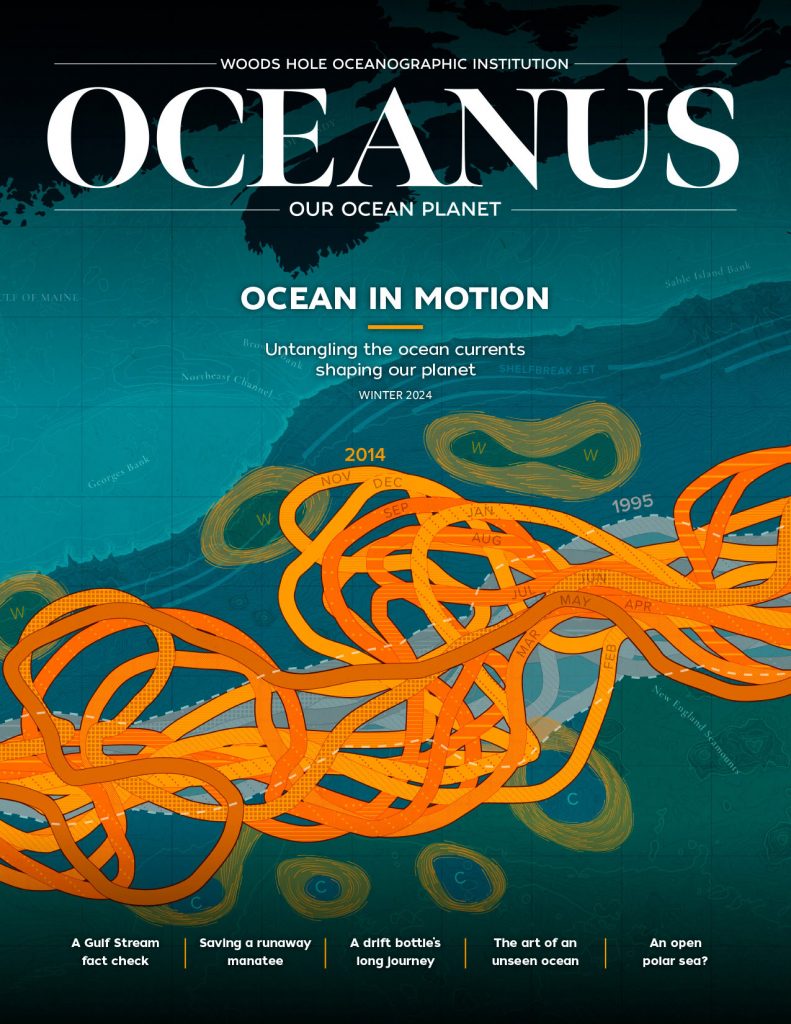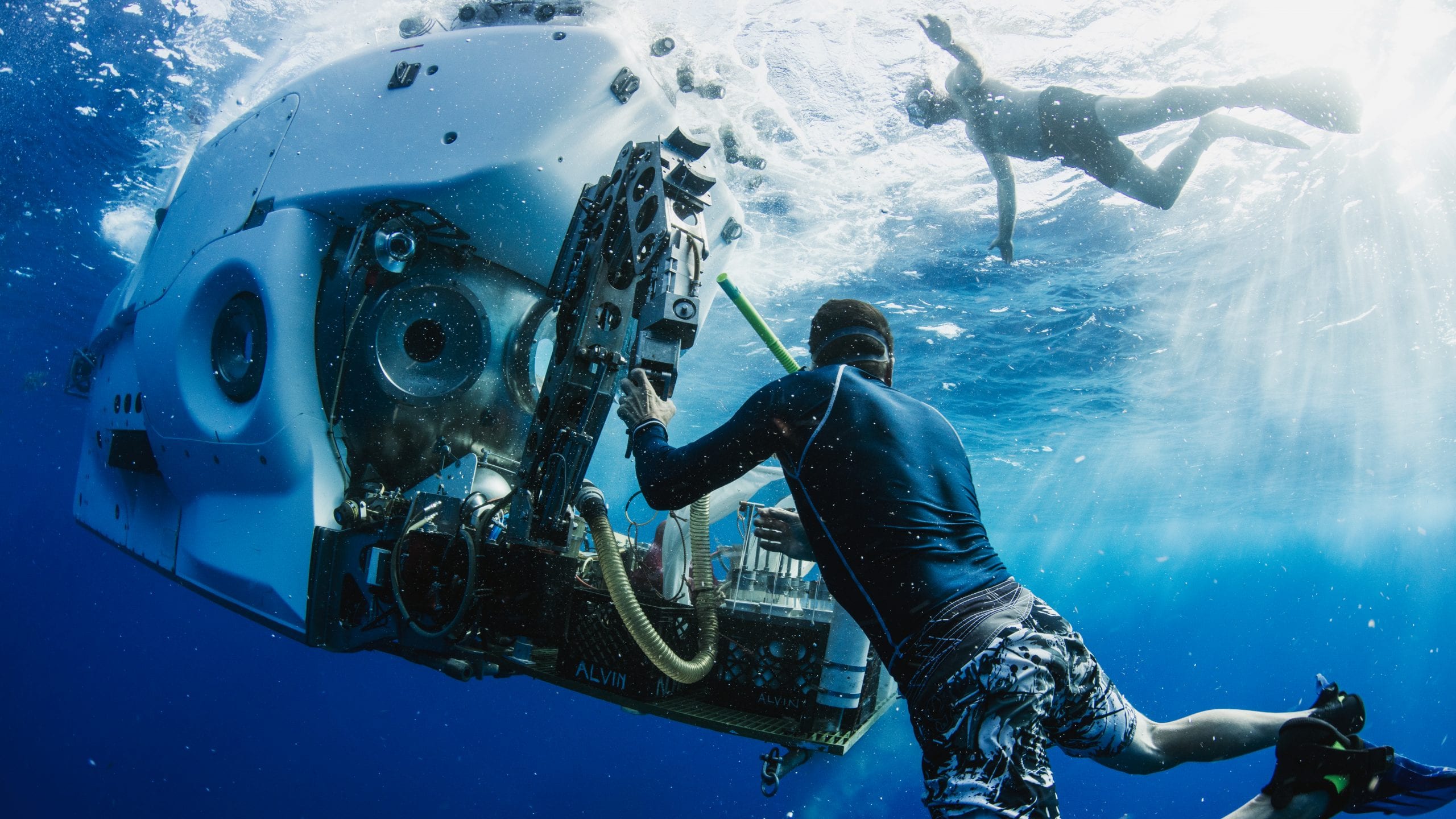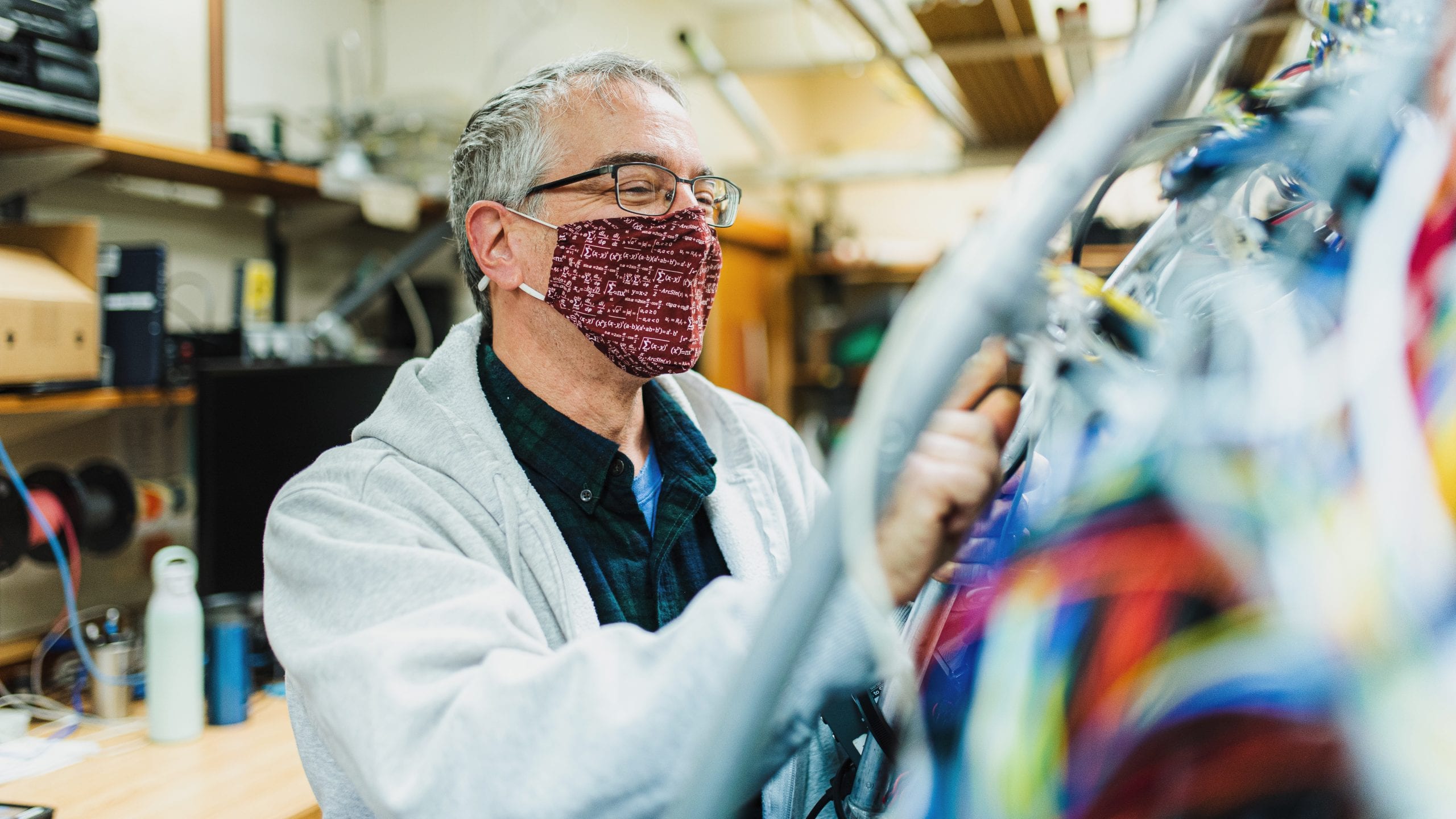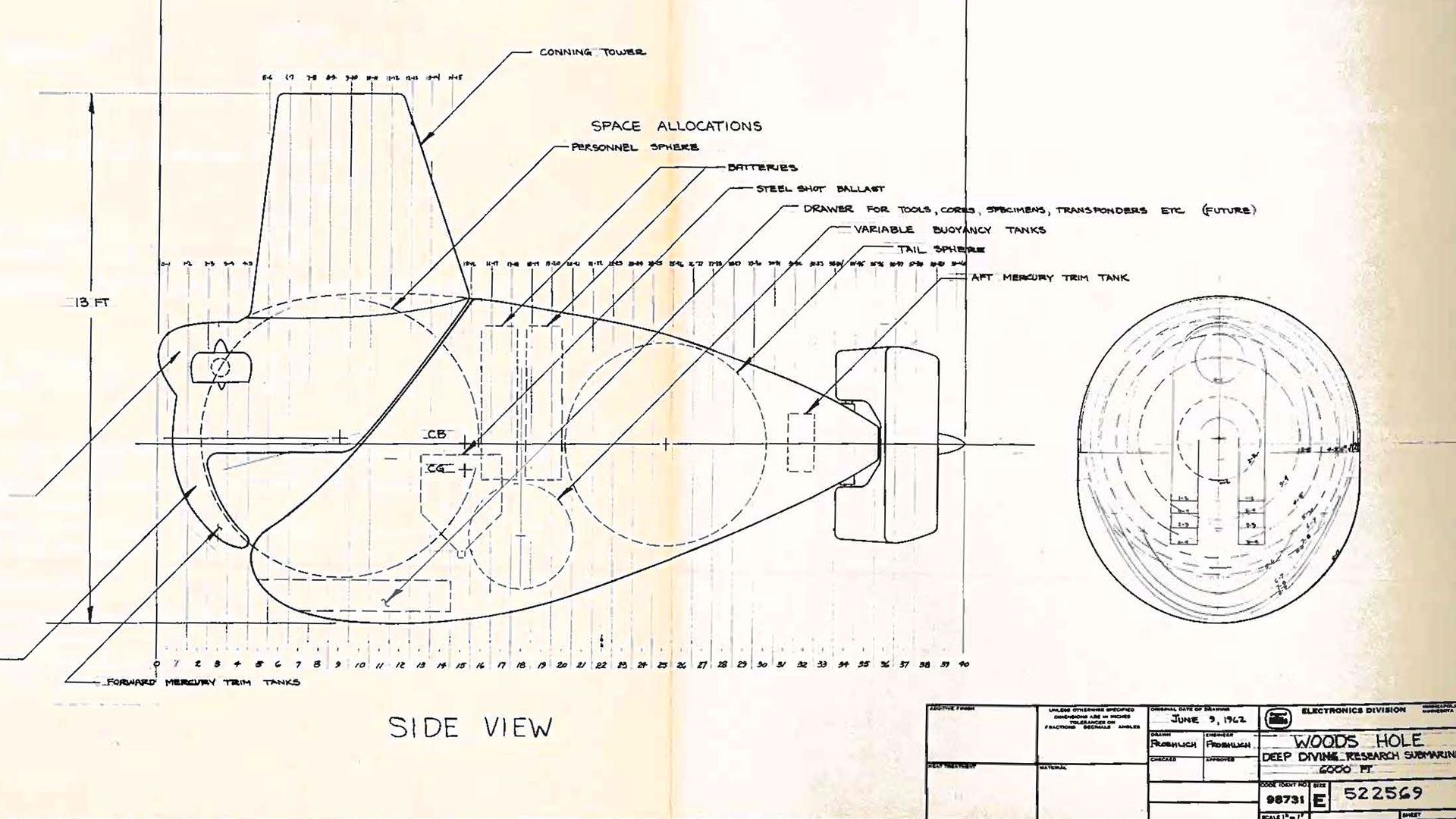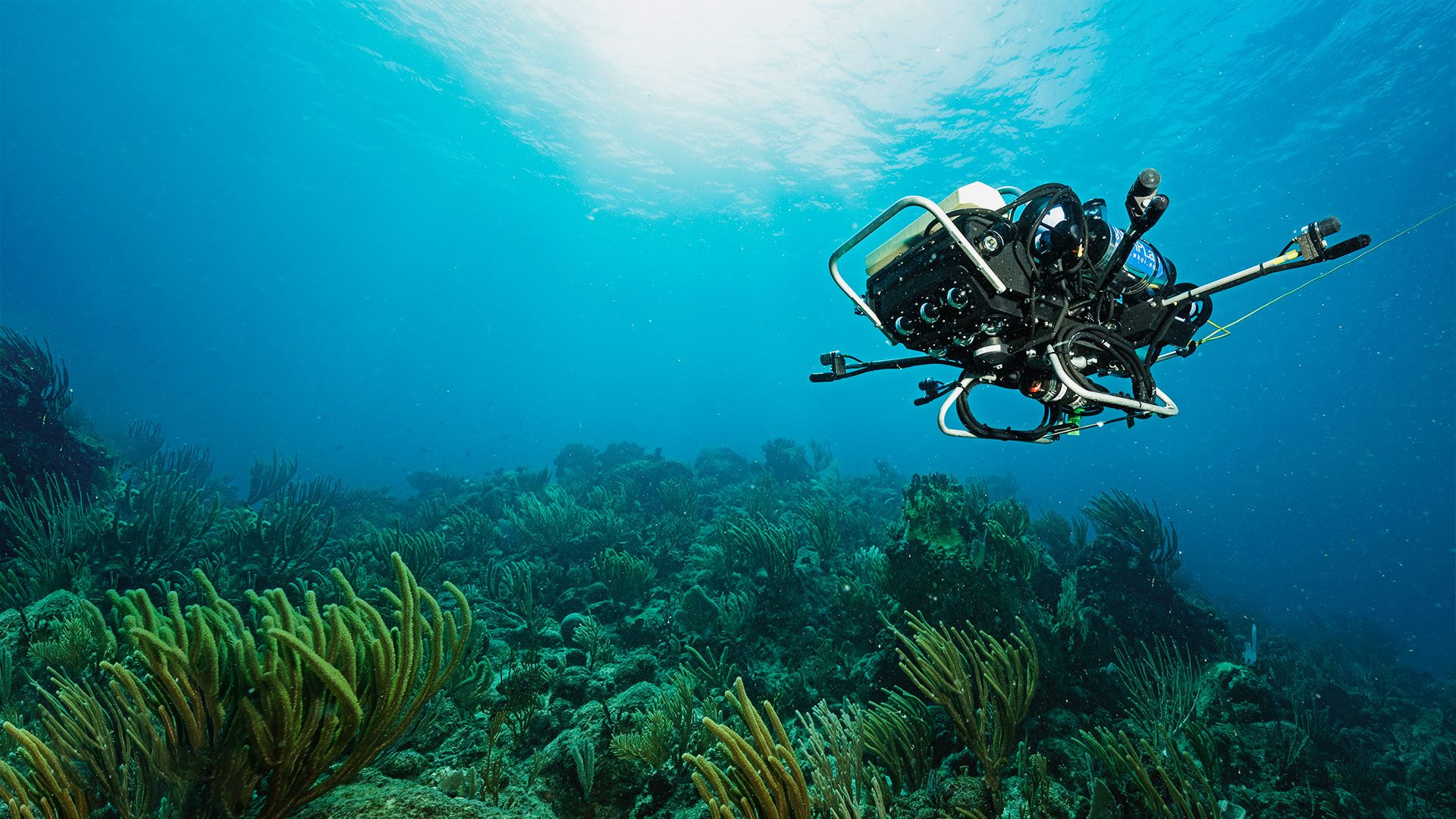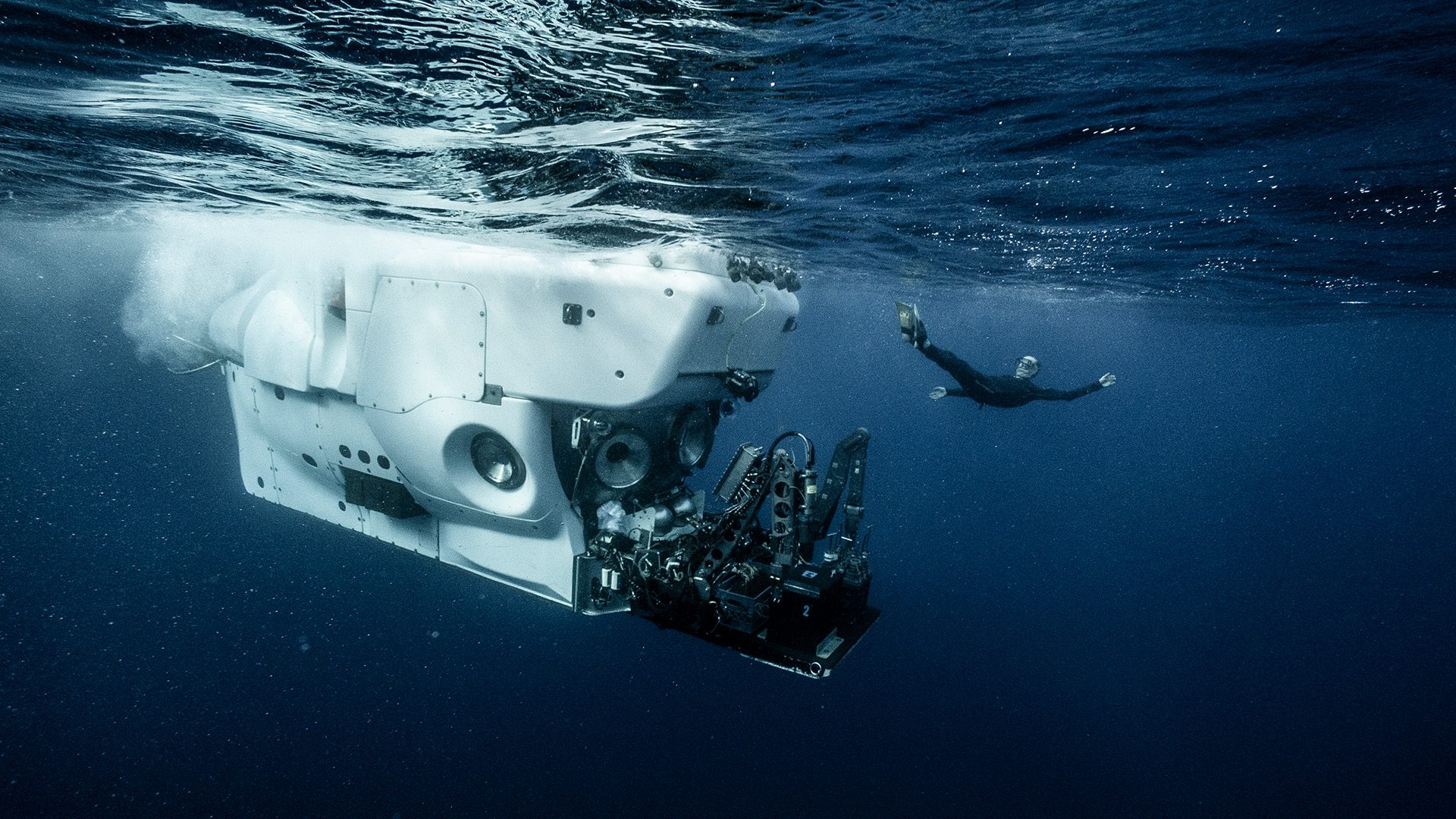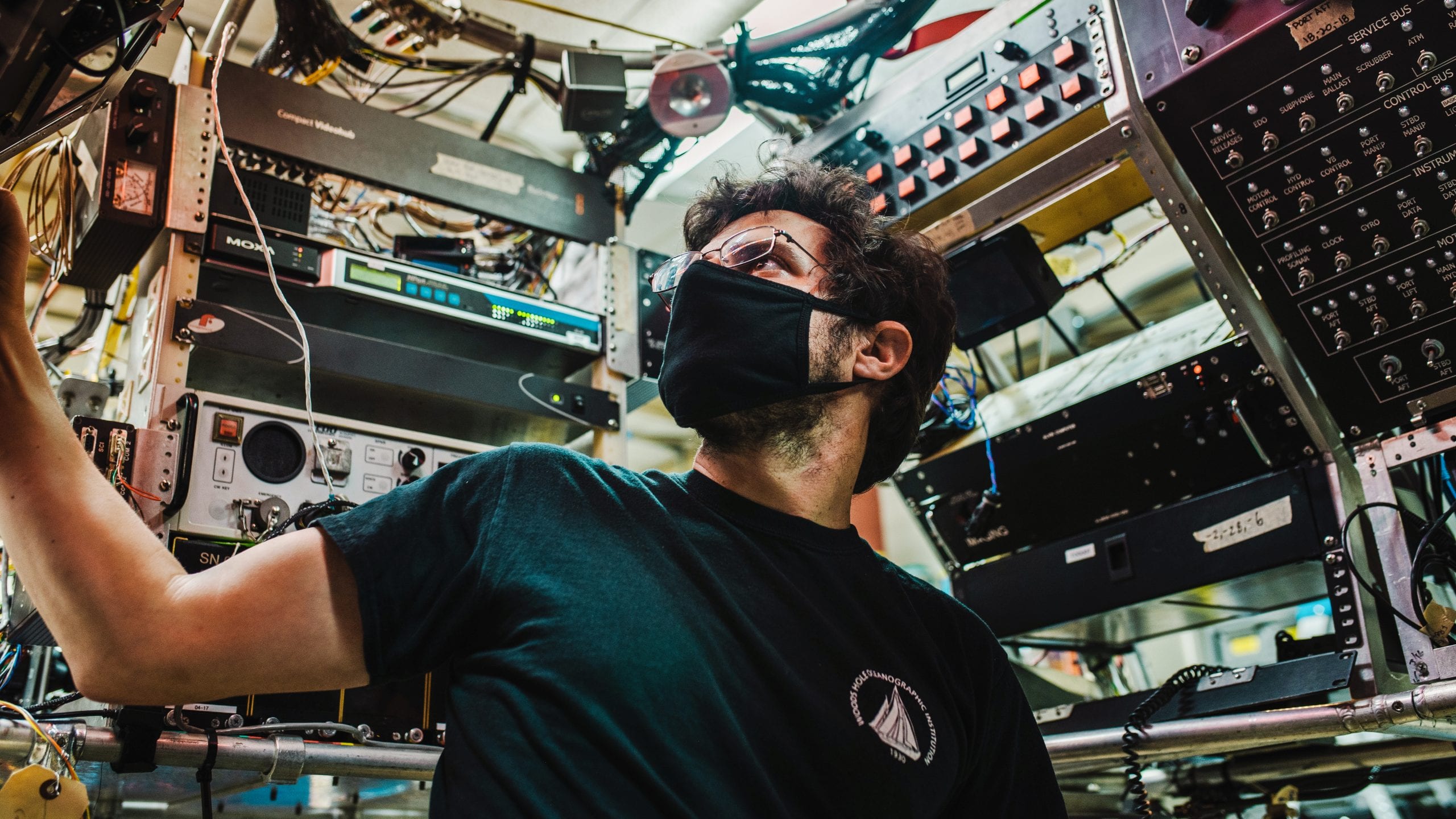
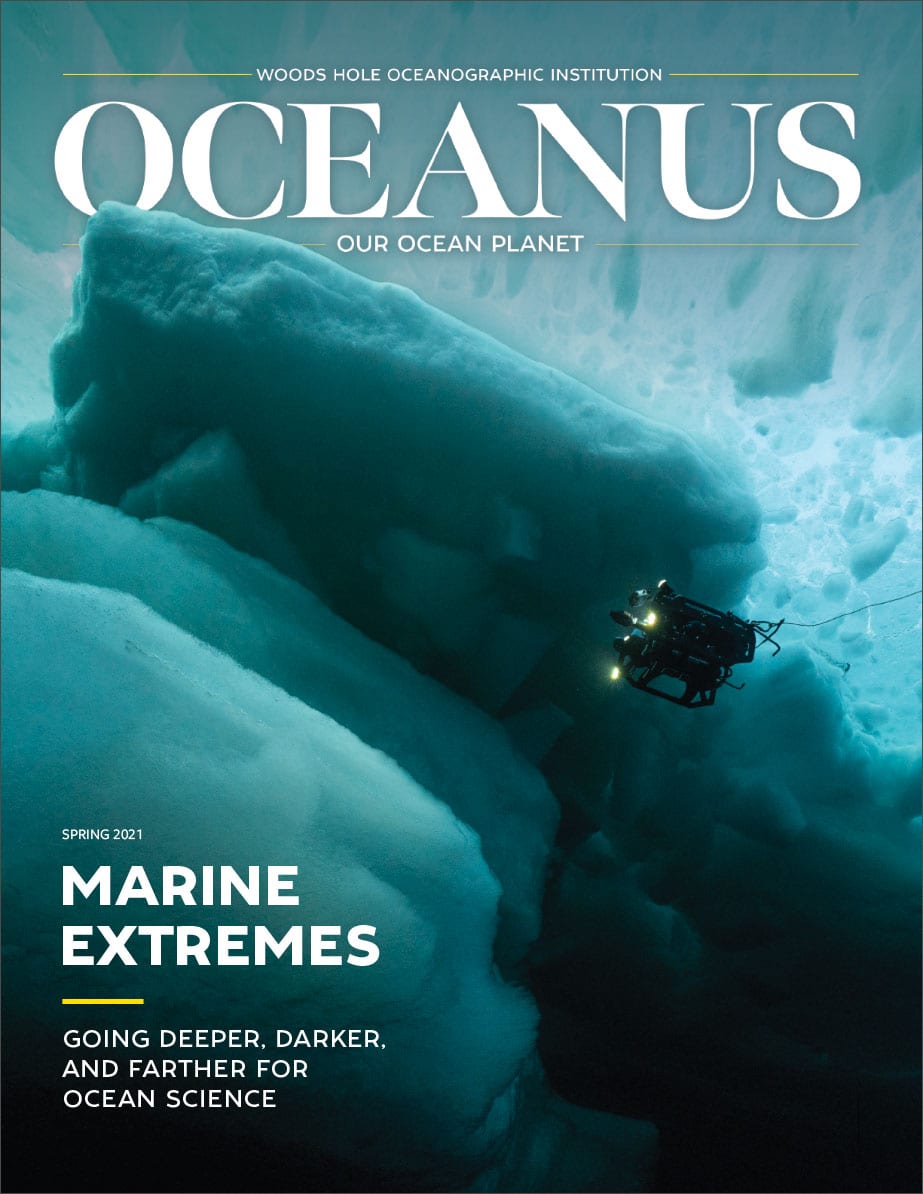 This article printed in Oceanus Spring 2021
This article printed in Oceanus Spring 2021
Estimated reading time: 3 minutes
Alvin pilot Drew Bewley tests the sub’s monitor screens, now staged on a mock-personnel sphere known as the “Bird Cage.” (Daniel Hentz, © Woods Hole Oceanographic Institution)
The human-occupied vehicle (HOV) Alvin is midway through the final phase of an overhaul that will allow the submersible to dive to 6,500 meters (21,325 feet).
This increased depth range will give ocean scientists the ability to explore 99% of the ocean floor and study the abyssal region—one of the least-understood areas of the deep sea and home to high-temperature hydrothermal vents, submarine volcanoes, subduction trenches, mineral resources, and more. The sub was previously rated to 4,500 meters (14,763 feet), but the upgrade will make Alvin the only publicly funded human-occupied vehicle available to the U.S. scientific community for exploring the abyssal region in person.
“With a submarine that can dive to 6,500 meters, we will have an integrated system that allows the ocean to be explored to the fullest extent.”
—Andrew Bowen, director of the National Deep Submergence Facility
“There is an arc we can follow with Alvin as an iconic tool for exploring the ocean,” says Andrew Bowen, director of the National Deep Submergence Facility (NDSF). “With a submarine that can dive to 6,500 meters, we will have an integrated system that allows the ocean to be explored to the fullest extent. Alvin will soon be able to deliver humans into this harsh environment.”
Located at WHOI, NDSF is funded by the National Science Foundation, U.S. Navy, and National Oceanic and Atmospheric Administration and operates Alvin, remotely operated vehicle (ROV) Jason, and autonomous underwater vehicle (AUV) Sentry for the ocean science community.
Although Alvin has been operating since 1964, the vehicle was significantly rebuilt in 2013 during an overhaul that included forging a larger titanium personnel sphere and rebuilding much of the sub from scratch. These improvements were made with the 6,500-meter capacity in mind but left several critical steps for the final phase, which will be completed over the coming months.
To reach the new maximum depth, Alvin needs new titanium ballast spheres, and several of its syntactic foam modules need to be replaced with foam rated to withstand the increased pressure at 6,500 meters. Additional improvements include an upgrade to the hydraulic system, new thrusters and motor controllers, updates to the vehicle’s command and control system, and an additional manipulator arm, says project manager Anthony Tarantino.
The upgrade will take a year partly due to the unique nature of the submersible, Tarantino says. “There’s no economy of scale. You can’t just buy these components off the shelf. More than 80% of the vehicle is custom made.”
While the Alvin Group digs into the upgrade, deep-sea scientists convened an NSF-funded workshop to establish research priorities for the next phase of exploration in the abyssal region.
“These are unique ecosystems that have had to evolve around extremes—like the high temperatures of hydrothermal vents or the low-energy environments of abyssal plains,” says Adam Soule, former chief scientist for Deep Submergence at NDSF and one of the workshop conveners. “The freedom of an untethered vehicle is going to be really helpful in an environment where we know very little and have to use our observation skills to decide where to go and what samples to collect.”
Engineering and science verification dives are scheduled to begin in September 2021 from R/V Atlantis, which will be fresh out of its own midlife refit.
